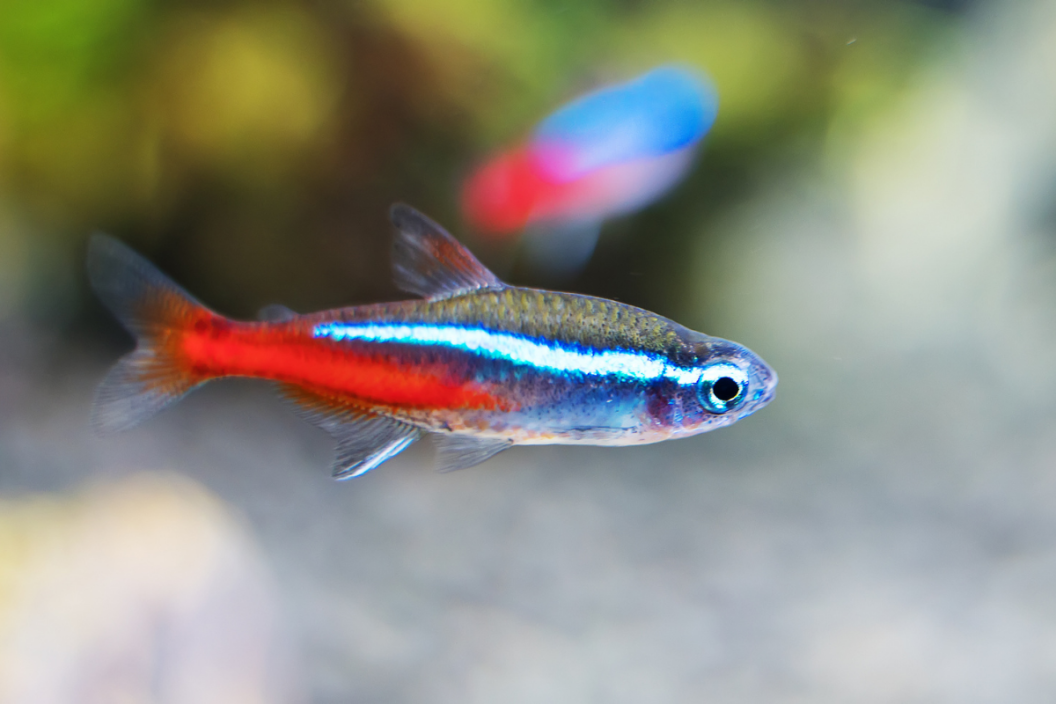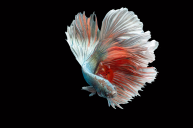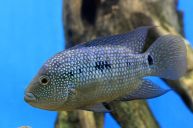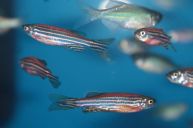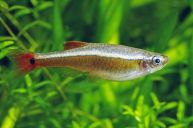Why are neon tetras so smart? They live in schools!
The neon tetra (Paracheirodon innesi) is a freshwater fish species of the characidae family of the order Characiformes. Its only natural habitat is in blackwater and clearwater streams in South America's Amazon basin near Brazil, Peru, and Colombia. Its light coloration makes it visible in dark blackwater lakes, and is also one of the main reasons for its popularity among freshwater fish hobbyists. They are little fish with a blue stripe and are similar to the cardinal tetra. Much like goldfish, these high quality shoaling fish are common sights among live plants in hobbyist aquariums. Let's a learn a little more about this little minnow.
1. Neon Tetras Are Hardy, In The Right Conditions
These shoal fish have a lifespan of up to ten years, but they can die quickly if the fish tank water changes. Despite being freshwater fish, neon tetras do best in acidic water. If the water parameters change dramatically, the fish will experience tension, depression, and a loss of immunity. Neon tetras are tropical fish that need a heater to hold the aquarium temperature between 72 and 80 degrees Fahrenheit. Tetra fish often need a good filtration system to provide a habitat for beneficial bacteria. Aeration and disinfection of the water is also important. Neon tetra disease is common in these small fish, especially if picked up from a local pet store. To avoid this, look for bright fish with characteristic red stripes and blue lines. A lack of color can indicate illness, so try not to purchase any fish from a tank with discolored or unhealthy tankmates. Red spots on the Neon Tetra's fins typically appear when the water conditions aren't right for them. An incorrect water level can cause stress, resulting in red spots.
2. Neon Tetras Are Schooling Fish
The tank size heavily influences the number of neon tetras you can hold, despite being small fish. However, a minimum of 6 neon tetras is strongly advised. Neon tetras are schooling fish, which means they feel healthy and secure in larger groups of their species members. There should be at least 6 in your tank at minimum. These schooling fish need groups of at least 5-10 to feel healthy. If left alone, the fish may become depressed and refuse to feed or swim regularly until they die.
3. They Have a Complicated Relationship With Betta Fish
Since neon tetras are not aggressive, they get along well with most other fish in freshwater aquariums. You don't need a large tank for them, but you can aim for at least a 10-gallon tank. They are omnivorous fish that aren't picky eaters. However, there are many reasons why tetras don't make good tankmates. Fin nippers like the tetra usually don't get along very well with a beautiful finned species like the betta. As schooling fish, they're also likely to swim into a betta's territory. Safety in numbers, after all. Even if you have a non-aggressive betta, it is always best to stop holding them with tetras. Bettas are carnivorous fish that require a high protein diet (this may be either live foods or frozen foods) such as worms, daphnia, bloodworms, brine shrimp, mosquito larvae, and other fish, making them at odds with the omnivorous nature of the tetra.
4. They Get Along Well With Guppies
When the conditions are correct, guppies and neon tetras make excellent tankmates. When not in an appropriately sized school, neons are vulnerable to fin nipping. Guppies do not attend school, but they are more at ease in groups of five or six, with a female to male ratio of two to three. Guppies and neon tetras will coexist in the same tank. These two aquarium fish species have a lot in common, since they are both peaceful fish and omnivores (thus able to eat the same flake food) with the same preference for community tank water temperature.
Furthermore, the two species tend to swim in groups rather than individually. Neon tetras also do well with the Corydoras Catfish, as well as rasboras. Keep in mind that there are many varieties of neon tetras, and you can place black neon tetras in your tank if you don't like bright colors. This can work great if you're going for a natural look with driftwood.
5. Neon Tetras Eat Their Babies
Males and females in a neon tetra school can pair up. If you see a male chasing a female and then see them swimming side by side, they are most likely spawning. Tetras are egg-scatterers, which means that the female releases her eggs, which fall to the bottom of the aquarium. Remove the adult tetras from the breeding tank as soon as you see the eggs. Otherwise, they will consume them. As a result, if you bring in spawn with adults as soon as they hatch, they will not survive.
Share your favorite aquarium fish on the Wide Open Pets Facebook page!
